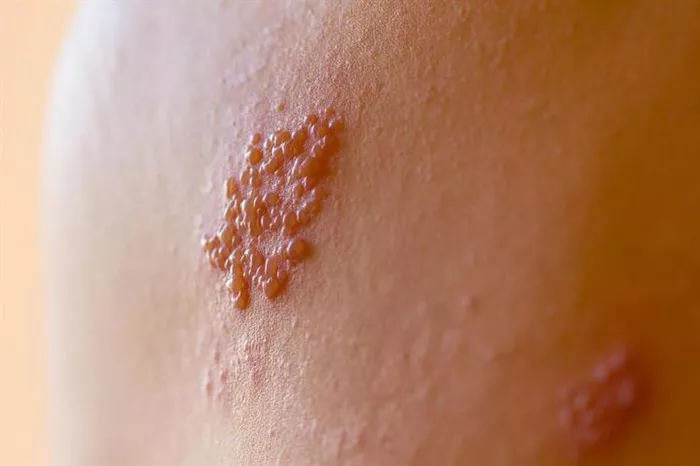Vitiligo is a chronic skin condition characterized by the loss of pigment, resulting in white patches on the skin. This condition occurs when melanocytes, the cells responsible for skin pigmentation, are destroyed or stop functioning. While vitiligo can affect any part of the body, it most commonly appears on the face, hands, and wrists. Although it is not life-threatening or contagious, vitiligo can significantly impact a person’s self-esteem and emotional well-being. Managing vitiligo involves a multifaceted approach that includes medical treatments, lifestyle adjustments, and psychological support. This article explores the various strategies available for those living with vitiligo.
Understanding Vitiligo
Vitiligo affects approximately 1-2% of the global population, and its exact cause remains unknown. However, several theories have been proposed, including autoimmune, genetic, and environmental factors.
Autoimmune Hypothesis
The autoimmune hypothesis suggests that vitiligo is an autoimmune disorder in which the body’s immune system mistakenly attacks and destroys melanocytes. This theory is supported by the fact that vitiligo is often associated with other autoimmune diseases, such as thyroid disorders, type 1 diabetes, and rheumatoid arthritis.
Genetic Factors
Genetics also play a significant role in vitiligo. About 20-30% of people with vitiligo have a family history of the condition. Researchers have identified several genes that may contribute to the risk of developing vitiligo, many of which are involved in immune system regulation and melanocyte function.
Environmental Triggers
Certain environmental factors, such as skin trauma, sunburn, or exposure to specific chemicals, can trigger or exacerbate vitiligo in predisposed individuals. Emotional stress has also been linked to the onset and progression of the disease.
Medical Treatments
There is currently no cure for vitiligo, but various treatments can help restore skin color or even out skin tone. The choice of treatment depends on the extent of the condition, the patient’s preference, and the response to previous therapies.
Topical Treatments
Topical treatments are often the first line of defense in managing vitiligo, particularly for limited and localized cases.
Corticosteroids
Topical corticosteroids are commonly prescribed to reduce inflammation and slow the progression of depigmentation. They are most effective when used early in the disease and can sometimes restore pigment in small patches of skin. However, prolonged use can cause side effects such as skin thinning and increased sensitivity.
Calcineurin Inhibitors
Calcineurin inhibitors, such as tacrolimus and pimecrolimus, are non-steroidal medications that suppress the immune response. They are often used on delicate areas of the skin, such as the face and genitals, where corticosteroids may cause adverse effects. These medications have shown promise in repigmenting vitiligo patches with fewer side effects.
Phototherapy
Phototherapy involves exposing the skin to ultraviolet (UV) light under medical supervision. This treatment can be effective for both localized and widespread vitiligo.
Narrowband UVB Therapy
Narrowband UVB (NB-UVB) therapy is considered one of the most effective treatments for vitiligo. It involves exposing the affected skin to a specific wavelength of UV light, which can stimulate melanocyte activity and promote repigmentation. NB-UVB therapy is usually administered two to three times per week in a clinical setting and can take several months to show results.
PUVA Therapy
Psoralen plus ultraviolet A (PUVA) therapy combines a photosensitizing drug called psoralen with UVA light exposure. Psoralen can be taken orally or applied topically, making the skin more responsive to UVA light. PUVA therapy can be effective but is associated with more side effects than NB-UVB, including an increased risk of skin cancer.
Surgical Treatments
For patients with stable vitiligo who have not responded to other treatments, surgical options may be considered.
Skin Grafting
Skin grafting involves transplanting healthy, pigmented skin from one area of the body to the depigmented patches. This procedure can be effective but carries risks such as infection, scarring, and an uneven skin appearance.
Melanocyte Transplantation
Melanocyte transplantation is a newer surgical technique where melanocytes are harvested from a patient’s normal skin, cultured in a laboratory, and then transplanted to the vitiligo-affected areas. This method aims to repopulate the depigmented skin with functioning melanocytes and has shown promising results in clinical trials.
SEE ALSO: What Are the Signs of Vitiligo
Depigmentation
For patients with extensive vitiligo who do not respond to repigmentation therapies, depigmentation may be an option. This treatment involves using medications like monobenzone to lighten the remaining pigmented skin, creating a more uniform appearance. Depigmentation is a permanent and irreversible process, so it requires careful consideration and counseling.
Lifestyle Adjustments
In addition to medical treatments, certain lifestyle adjustments can help manage vitiligo and improve the quality of life for those affected.
Sun Protection
Protecting the skin from sun exposure is crucial for individuals with vitiligo. Depigmented skin is more susceptible to sunburn and damage because it lacks melanin, the pigment that provides natural sun protection. Patients should use broad-spectrum sunscreen with an SPF of at least 30, wear protective clothing, and seek shade during peak sun hours.
Diet and Nutrition
While no specific diet has been proven to cure or treat vitiligo, maintaining a healthy diet can support overall skin health and immune function. Antioxidant-rich foods, such as fruits and vegetables, may help protect the skin from oxidative stress. Some studies suggest that certain vitamins and minerals, including vitamin D, vitamin B12, and folic acid, may benefit individuals with vitiligo, but more research is needed in this area.
Stress Management
Stress is known to exacerbate vitiligo, so managing stress is an important aspect of treatment. Techniques such as yoga, meditation, and deep-breathing exercises can help reduce stress levels. Counseling or support groups can also provide emotional support and coping strategies.
Psychological Support
The psychological impact of vitiligo can be significant, affecting self-esteem, body image, and overall mental health. Addressing these psychological aspects is a vital component of comprehensive vitiligo management.
Counseling and Therapy
Individual or group counseling can help patients cope with the emotional challenges of living with vitiligo. Cognitive-behavioral therapy (CBT) is particularly effective in addressing negative thought patterns and promoting positive coping mechanisms.
Support Groups
Joining a support group can provide a sense of community and belonging for those with vitiligo. Sharing experiences and advice with others who understand the condition can be empowering and reduce feelings of isolation.
Education and Awareness
Educating patients, their families, and the public about vitiligo can help reduce stigma and promote acceptance. Increasing awareness can lead to better support systems and a more inclusive society for individuals with vitiligo.
Innovations and Future Directions
Research into vitiligo is ongoing, and several promising new treatments are on the horizon.
Janus Kinase (JAK) Inhibitors
JAK inhibitors are a class of medications that block specific enzymes involved in the inflammatory process. Early studies have shown that JAK inhibitors, such as tofacitinib and ruxolitinib, can promote repigmentation in vitiligo patients, offering a potential new treatment avenue.
Stem Cell Therapy
Stem cell therapy aims to regenerate melanocytes using the patient’s stem cells. This innovative approach is still in the experimental stages but holds promise for developing more effective treatments for vitiligo in the future.
Gene Therapy
Advances in gene therapy may eventually allow for the correction of genetic defects that contribute to vitiligo. While this approach is still theoretical, ongoing research in genetics and molecular biology could pave the way for groundbreaking treatments.
Conclusion
Managing vitiligo requires a holistic approach that combines medical treatments, lifestyle adjustments, and psychological support. While there is currently no cure for vitiligo, various therapies can help restore skin color, improve quality of life, and address the emotional challenges associated with the condition. Continued research and innovation hold promise for even more effective treatments in the future, offering hope to those affected by this complex and often misunderstood disease.
Related Topics:

























